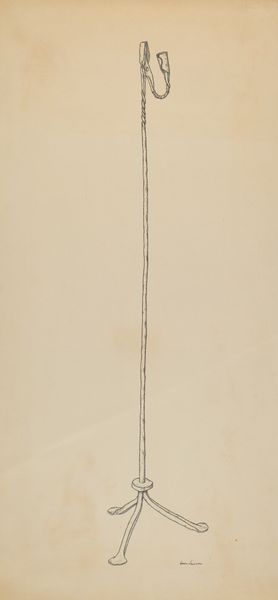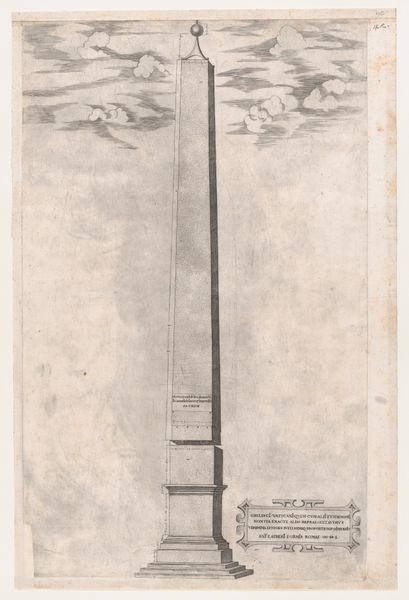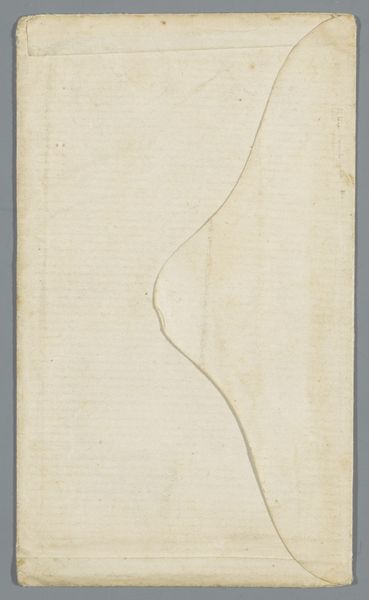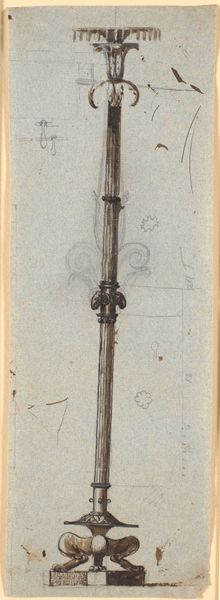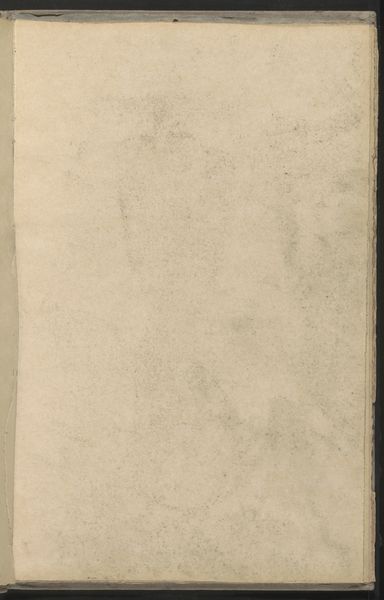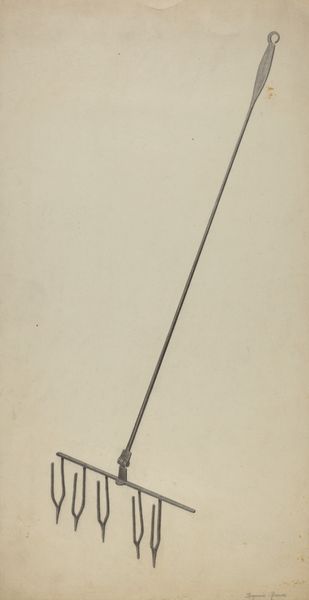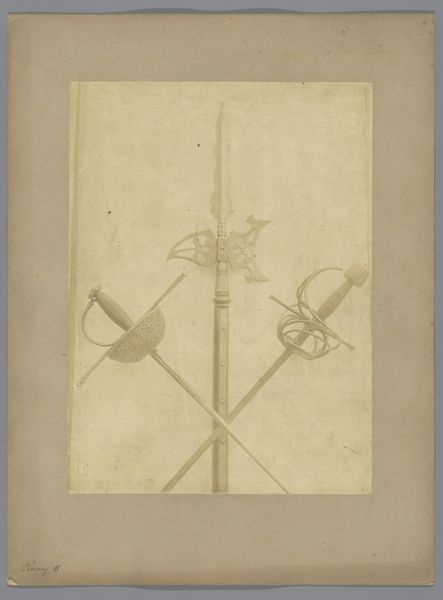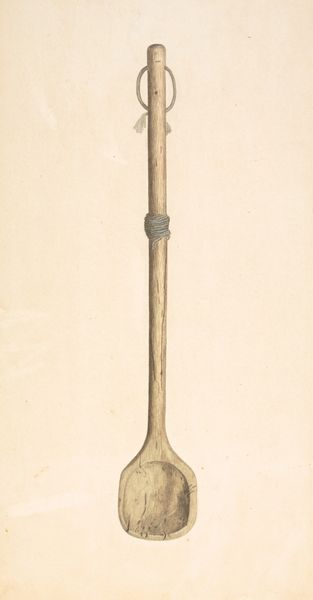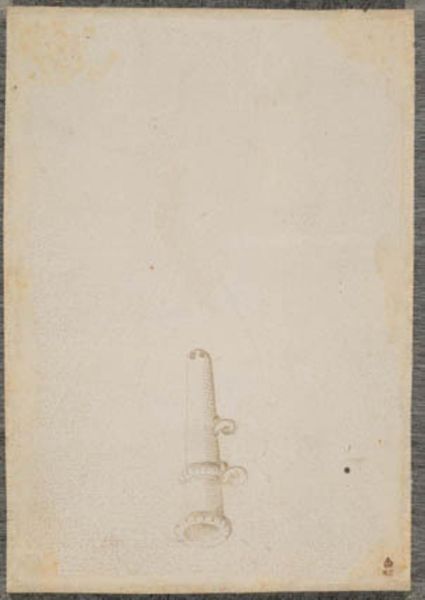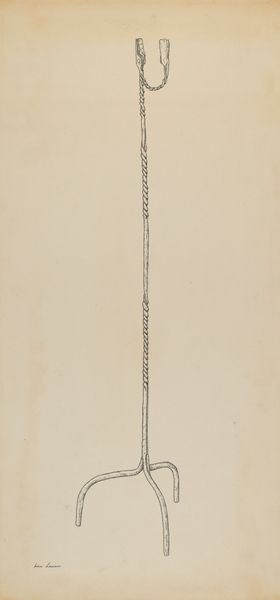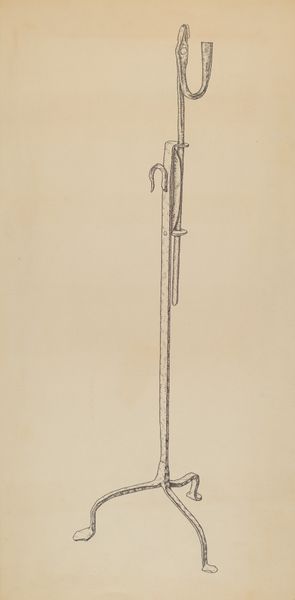
drawing, print, paper, pencil
#
drawing
# print
#
paper
#
11_renaissance
#
pencil
Dimensions: sheet: 24 3/16 x 8 9/16 in. (61.4 x 21.7 cm)
Copyright: Public Domain
Curator: Well, hello there. Today, we're observing a design for a scepter, likely from the years 1500 to 1600, made anonymously. The rendering combines pencil drawing and printmaking on paper and it is held in the collection of the Metropolitan Museum of Art. It’s simple yet compelling in its intention. Editor: It has this severe formality, doesn’t it? So austere. I immediately feel the weight of institutional power emanating from it, even in this draft form. The muted tones enhance the gravitas. Curator: Indeed, and that power derives, in part, from very specific symbolic attributes, like the intricate foliate patterns around what appears to be a finial at the top of the scepter. Those repeating leaves suggest fecundity, royal blessing. Editor: Sure, there is symbolism at play. But I'm also curious about what's being omitted. Who designed this, for whom was it intended, and what does the erasure of the artist say about societal roles back then? Were they intentionally expunged, or did that sort of work simply not matter? Curator: Excellent points! Often, the identity of artisans was absorbed by that of their royal patrons, particularly in the service of power and ideology. And it appears here, judging by the paper and medium, that this may be a preparatory sketch intended for review or approval before realizing the object in a costly metal. Editor: So this is essentially a blueprint of control, laid out for inspection and ultimately, for use. Thinking about the material itself and this simple monochrome, what kind of presence did that absence of ornamentation give the monarch or institution which then commissioned it? The effect on beholders would have been of stark, impenetrable authority. Curator: Precisely! Visual language became, then as it is now, intrinsic to upholding social order. Each symbol had meaning, and in the hand of a monarch or leader, projected a tangible weight of legitimacy, connecting earthly power to the idea of divine right. The scepter, in its own visual shorthand, bridged those worlds. Editor: It's a chilling reminder of how meticulously power is designed, from the ground up. I wonder, in a contemporary context, how we can become more astute readers of such embedded visual rhetoric. To me it says how critical visual media literacy is. Curator: That’s exactly right! By examining objects like these, designs intended to influence their viewers centuries ago, we can unravel those embedded codes and bring about greater agency when engaging with today's media.
Comments
No comments
Be the first to comment and join the conversation on the ultimate creative platform.


